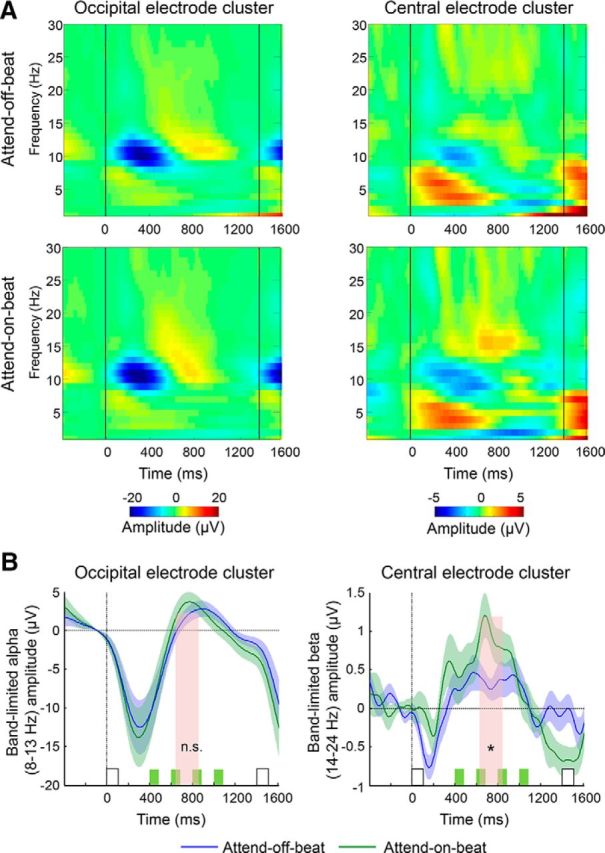Figure 6.

Experiment 2: modulation of beta- but not alpha-band activity by shifting resources away from rhythm-on-beat times to a jittered off-beat time. A, Group-averaged time–frequency representations in the two rhythmic conditions (top row, attend-off-beat; bottom row, attend-on-beat), measured in occipital (left column) and central (right column) electrode clusters. Black lines mark the onset of rhythmic stimuli at position n (the last stimulus preceding the target, at time = 850 ms for fast streams and time = 1400 ms for slow streams) and at position n − 1 (at time = 0). B, Band-limited amplitude of occipital alpha (8–13 Hz, left column) and central beta (14–24 Hz, right column) activity in the attend-off-beat (blue) and the attend-on-beat (green) conditions. White squares mark rhythmic stimuli at positions n and n − 1. Green squares mark the possible times of off-beat targets. Note that a target was never actually presented in the analyzed interval. Pink shading marks the predefined interval for analysis. Error margins reflect the SE for the difference between the attend-on-beat and attend-off-beat conditions. *p < 0.05).
